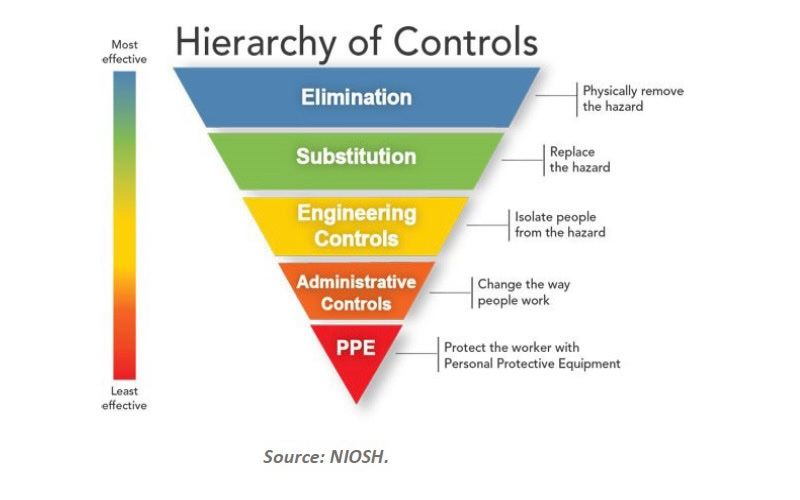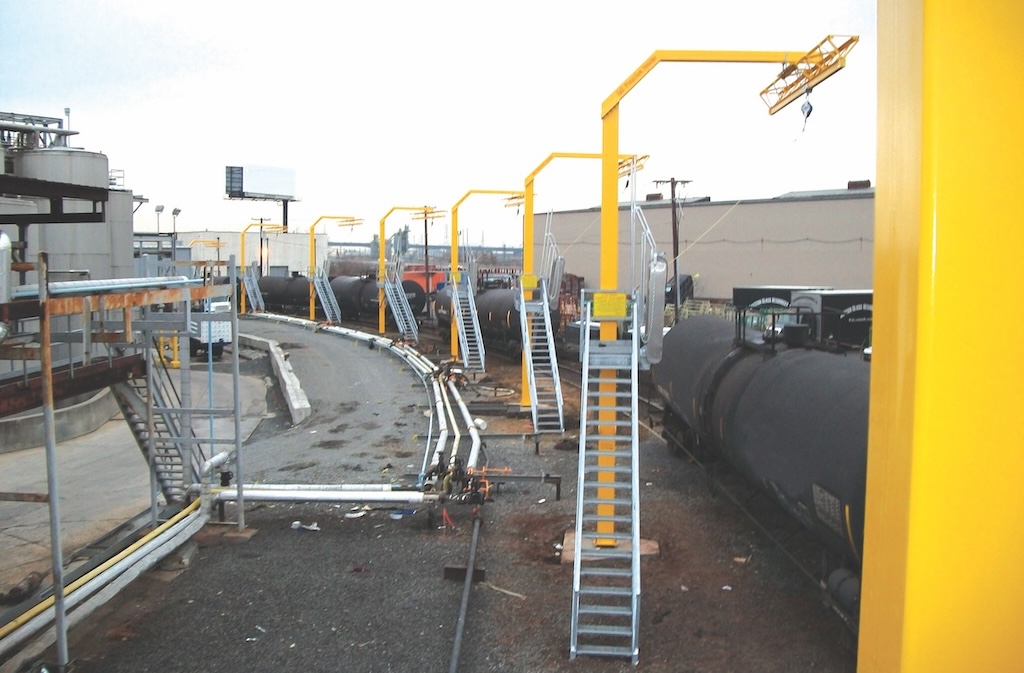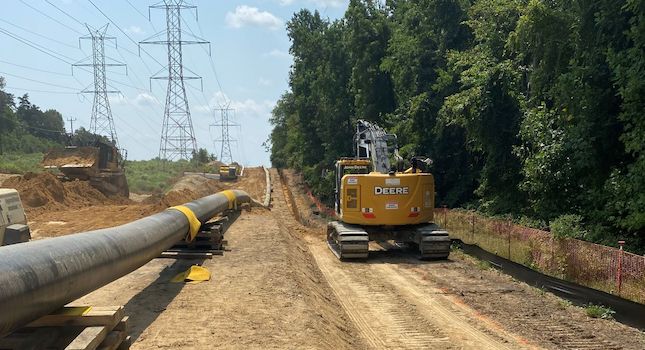Stainless steels are becoming the material of choice in applications where corrosion resistance is a necessity. Unlike typical lower alloy or carbon steels, stainless does not rust in ordinary atmospheric exposure, making it less prone to contamination and extending its usefulness. Industrial uses include equipment for chemical plants, food processing, pharmaceutical manufacturing, and petroleu...
Key Concepts
- Selection of the welding process depends on the composition of the stainless steel used.
- There are at least four welding processes available for most jobs.
- Flux selection can affect to quality of the weld.
Stainless steels are becoming the material of choice in applications where corrosion resistance is a necessity. Unlike typical lower alloy or carbon steels, stainless does not rust in ordinary atmospheric exposure, making it less prone to contamination and extending its usefulness.
Industrial uses include equipment for chemical plants, food processing, pharmaceutical manufacturing, and petroleum applications. Increasingly, it is also used in structures due to its attractive surface appearance and low maintenance requirements over the life of the product.
Stainless steel is an iron-based alloy containing at least 10.5% chromium. What makes stainless unique is an invisible, protective layer of chromium oxide which forms on its surface in the presence of oxygen. This layer protects the stainless steel and keeps it from oxidizing when it comes in contact with moisture (Fig. 1).
Welding processes
A principal concern in selecting welding filler metals for stainless steels is to match the important properties of the base metal. In addition, for nominally austenitic stainless steels and for duplex stainless steels, some control over ferrite content of the weld metal is appropriate.
Specification of ferrite in nominally austenitic and duplex stainless steel weld is based upon Ferrite Numbers (FN) defined in the AWS A4.2 Standard. A magnetically-determined FN is much simpler to obtain and is more reproducible than metallographically determined ferrite percentages. The ASME Code recommends the FN system.
Since stainless steel is more expensive than regular steel, it is important to choose a welding process to provide the best results. Burnthrough and warpage are a concern since stainless steel is commonly used in thin sections. Various processes are recommended for welding stainless steel. Process selection should be made on a case-by-case basis depending on the particular application.
Gas Metal Arc Welding ‘s (GMAW) main advantage is that it is fast. Using a spool of solid or metal-cored wire, an operator can produce high deposition rates. One disadvantage is the cost of wire feeding equipment, power supplies, and gas shielding. Because little or no slag is formed, there is usually no need to remove slag between passes.
Solid and metal-cored wire can be used in short circuiting, globular, or spray modes of arc transfer to give the process a wide range of deposition rates and heat inputs, though globular transfer is seldom used for stainless steels. Pulsed spray can be used on thinner sections or for out-of-position welding.
GMAW with spray transfer is used to join sections thicker than 0.25 in. because of its high deposition rates. Welding procedures are similar for conventional austenitic and duplex stainless steels. Short circuiting transfer GMAW is extensively used for stainless steel sheet and thin tubing (Fig. 2). #446
GMAW requires a shielding gas to prevent oxidation of the stainless steel alloys in the welding arc. Depending on location and regional tendencies, mixtures of argon, helium, and CO2 are used. A small oxygen addition can provide a stable arc, but some aluminum or titanium can be lost by oxidation from certain PH filler metals during transfer across the arc.
For flat position welding, spray transfer is usually preferred. For other welding positions and for thin gauge stainless steel, short circuiting transfer is often used with helium-rich gas such as 90% helium, 7.5% argon, 2.5% CO2. Pulsed spray transfer can be employed using argon with a small addition of oxygen or carbon dioxide. Gases higher in CO2, such as 75% argon with 25% CO2, tend to produce significant carbon pickup by the stainless steel weld metal, and are not recommended.
Short circuiting transfer GMAW often results in spatter levels, which may be unacceptable from a cosmetic point of view. A recent advance in short-circuiting transfer, Surface Tension Transfer, produces a dramatic reduction in spatter.
Flux Cored Arc Welding (FCAW) is commonly used for welding stainless steel out-of-position as well as for downhand welding. Flux cored wire uses basically the same wire feed equipment and power supply as for GMAW. Some FCAW wires contain a fast freezing flux to form a slag shelf that allows out-of-position welding without a special power supply.
A given alloy composition can be designated only for flat or horizontal welding (AWS classes EXXXT0-X) or for all position welding (EXXXT1-X). The alloy composition can be designated for CO2 shielding (EXXXTX-1), 75% argon to 25% CO2 shielding (EXXXTX-4), or self-shielding (EXXXT0-3). Although carbon dioxide gas shielding is not recommended for GMAW, it is commonly used with flux cored arc welding because the slag protects the metal from carbon pickup.
Use of EXXXT0-3 with gas will result in high ferrite. Use of EXXXTX-1 or EXXXTX-4 without gas will result in little or no ferrite and possibly porosity. Flux-cored wire has an advantage over coated electrodes since an operator does not need to stop welding to change electrodes.
In recent years, all-position gas-shielded, flux-cored stainless steel electrodes have become very operator-friendly. A single weld setting with a conventional (non-pulsing) power source allows a welder to make downhand, horizontal, vertical-up, and overhead welds, without weaving, at a deposition rate of about 6.3 lb./hr.
Gas Tungsten Arc Welding (GTAW) can produce high quality, clean welds with a minimal amount of defects, although it is a slower process than others we’ve noted so far. GTAW is typically used for critical welds in industries such as food service and nuclear where strict conformance to code is mandatory. It is also often used for root passes before switching to other processes for the fill passes in pipe and pressure vessel welding. The tungsten electrode should not touch the work to avoid contaminating the stainless steel with tungsten.
Normally DC electrode negative is used with a power supply having constant current output. However, alternating current is sometimes used to weld stainless steels containing aluminum for more cleaning action. Shielding gas is normally argon, although helium or an argon-helium mixture might be used for greater penetration (Fig. 3).
Shielded Metal Arc Welding (SMAW) is typically used for repair work or when infrequent welding is required. It is often used for general fabrication of stainless steels. Welding equipment for SMAW has the lowest cost, but deposition rates also tend to be lower than for GMAW or FCAW. SMAW also tends to burnthrough on thin sections.
Coated electrodes are available in most stainless compositions in a range of sizes that can be used to weld joints in thicknesses from 0.05 inches to several inches. Slag from each pass must be completely removed before depositing the next pass to avoid porosity and slag entrapment.
There are basically four types of coated electrodes for stainless applications: lime, titania, silica-titania, and very heavy coatings for downhand and horizontal welding. Electrode selection is based mainly on the welding position.
Lime-coated electrodes (-15) operate on DC only. They are recommended for:
-
Vertical and overhead welding and all position applications such as pipe. The light slag wets rapidly for good wash-in and no undercutting.
-
Root passes on heavy plate. The full throat section of the slightly convex beads helps prevent cracking.
-
Fully austenitic high alloy stainless steels that are sensitive to weld centerline cracking.
Titania-coated electrodes operate on AC or DC, but DC is preferred. These (-16) electrodes are recommended for: -
Applications in the flat position.
-
Vertical up and overhead welding when lime-coated electrodes are not available.
Silica-titania coated electrodes (-17) operate on AC or DC, but DC is preferred. Silica-titania are recommended for: -
Flat and horizontal position welding when minimum cleanup is desired
- Where a concave contour is desired
-
Heavy coated electrodes (-26) are recommended mainly for downhand welding, though they can be used for horizontal fillets. These electrodes operate on both AC and DC, but DC is usually preferred. They are recommended for high current, high deposition rate welding.
-
Coated electrodes should be treated and stored as low hydrogen electrodes. Once a sealed container is opened, the container can be resealed, or the electrodes should be stored in a holding oven at 200 F to 300 F until used. If the electrodes are exposed to moist air, baking as recommended by the manufacturer can dry them. This baking temperature usually is between 500 F and 600 F, but can be as high as 800 F for the -17 coating type.
Submerged Arc Welding (SAW) is commonly used to join thick austenitic stainless steels, usually greater than 0.5 in. thick. It is also used for duplex and martensitic stainless steels. SAW is used where higher heat input and slower solidification rates are allowable.
For austenitic stainless steel in which ferrite is not possible in the weld metal (types 310 or 330, for example), submerged arc welding is usually best avoided due to hot cracking. Welding is generally performed using DC electrode positive. Alternating current is sometimes used for reduced penetration and good arc stability. DC electrode negative is used primarily for limiting dilution during cladding.
During SAW, extensive interaction occurs between the wire and the flux. Chemical elements can be exchanged. There is no good standard for classifying fluxes for SAW of stainless steels.
Fluxes
Fluxes high in silica can rob the weld metal of chromium and add silicon. Fluxes that are low in silica produce very little chromium loss. Some fluxes are designed to include metallic chromium in the flux particles, and this chromium is added to the weld metal so that a chromium increase may occur.
The extent to which chromium loss or gain takes place is determined by whether the flux is high in silica, low in silica, and/or contains metallic chromium. The flux manufacturer should be consulted concerning this effect for a given flux.
The extent of interaction between flux and wire is influenced by the ratio of flux melted to wire melted. The higher the flux: wire ratio, the greater the effect can be with either high silica flux or with flux containing metallic chromium.
Certain welding conditions increase the flux: wire ratio. Beginning from a given condition, flux: wire ratio is increased by increasing voltage, decreasing wire feed speed (current), or decreasing electrical stickout. Only fluxes low in silica and free of metallic chromium are nearly immune to effects of varying flux: wire ratio.
Conventional austenitic stainless steel electrodes such as ER308, ER309, and ER316 can be used with conventional stainless steel fluxes for welding most of the austenitic stainless steels except applications where the FN must be less than 5. If a low FN must be obtained, a special electrode and/or special flux may also need to be obtained.
If base metal strength must be attained in the weld metal with martensitic or precipitation hardening stainless steels, special wires, fluxes, and procedures must be used which will respond to postweld heat treatment.
If special fluxes are not used, the weld metal may not respond to heat treatment. This is particularly true for aluminum-bearing electrodes where aluminum is lost through metal-slag reactions. The stainless flux manufacturer should be consulted for recommendation on fluxes and welding procedures.
Most stainless steel is considered to have good weldability. It is important to make sure joint surfaces and any filler metal be kept free from oxide, organic material, or other contamination.
Sensitization
Ferritic stainless steels and some austenitic stainless steels which contain appreciable free carbon (greater than about 0.04% C) can be rendered sensitive to intergranular corrosion in the heat-affected zone (HAZ) of a weld.
The phenomenon, called sensitization, occurs where a peak temperature of about 900 F to 1,600 F is reached in the HAZ. Chromium carbides precipitate on grain boundaries, and in the process of doing so, chromium as an alloy element is depleted in the metal adjacent to the grain boundaries. In corrosive service, this chromium-depleted metal is selectively attacked.
Low welding heat input can limit, but not eliminate, sensitization. The best methods of preventing sensitization are selection of very low carbon base metal (less than 0.03% C), or selection of a grade stabilized with titanium or niobium (also known as columbium), such as types 321 or 347. It should be emphasized that sensitization is almost never a weld metal problem; it is largely a HAZ problem.
More Info:
This article was contributed by The Lincoln Electric Co. If you have any questions about welding stainless steels, contact The Lincoln Electric Co. at lincolnelectric.com or call 216-383-2462. Article edited by Joseph L. Foszcz. Senior Editor, 630-288-8776, [email protected] .



